
[139] Euphorbia characias, Mediterranean Spurge
Introduction
Euphorbia characias, Mediterranean Spurge, also known as Albanian Spurge, is an evergreen shrub cultivated as a garden plant. It has large complex inflorescences on structures that look like green coloured flowers.
The name Spurge is used in general for the family Euphorbiaceae and for many of its members.
Taxonomy
Kingdom – Plants
Division – Vascular Plants
Class – Angiosperms (Flowering Plants)
Order – Malpighiales
Family – Euphorbiaceae (Spurge family)
Subfamily – Euphorbiodeae
Tribe – Euphorbieae
Subtribe – Euphorbiinae (Just Euphorbia)
Genus – Euphorbia (Spurges)
Scientific Name – Euphorbia characias
It has several synonyms including Euphorbia wulfenii for the subspecies A c wulfenii.
There are many cultivars which may have greyish or blue foliage.
Name
Spurge comes from the Middle English espurge meaning purge, from the use of the milky sap as a purgative.
Euphorbia comes from Euphorbos (52BC – 23 AD), the Greek physician of King Juba II of Numibia (modern northern Algeria), who married the daughter of Anthony and Cleopatra. Juba wrote about a species Euphorbia obtusifolia regis-jubae, which he named after his doctor.
Characias comes from the name for this species, kharakhias, used by the Greek botanist Pedanius Dioscorides (c40-90 AD).
Franz Xaver von Wulfen (1728-1805), was an Austrian botanist with several plants named after him.
Description
Euphorbiaceae is one of the largest families of plants with about 7 500 species in 300 genera.
All those in the subfamily Euphorbioideae (including Euphorbia and the Rubber tree) produce caustic, poisonous milky sap.
Six other closely related species in the subtribe Euphorbiinae have recently all been merged within Euphorbia, which is now the only member of its subtribe. The genus Euphorbia has about 2 000 species. Many species are succulent and can be mistaken for cactus.
Euphorbia species have a unique flower structure. The inflorescence looks like a single flower but is a fusion of many tiny flowers, which have no petals or sepals. The supporting structure underneath this false flower gives the impression of a green flower. The flowers themselves do not produce nectar but this structure underneath, the involucre, does produce nectar.
Mediterranean spurge is a small evergreen shrub.
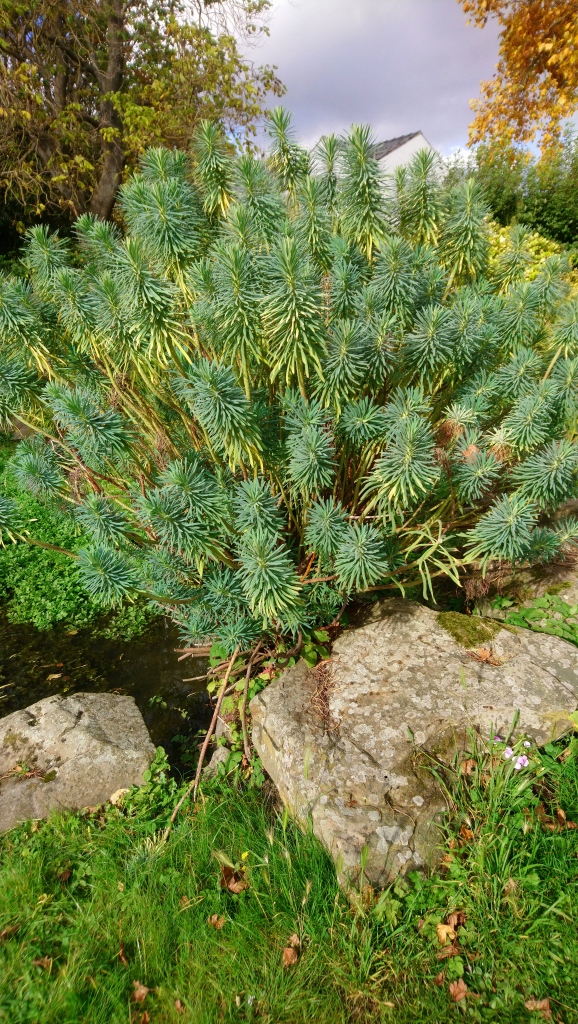
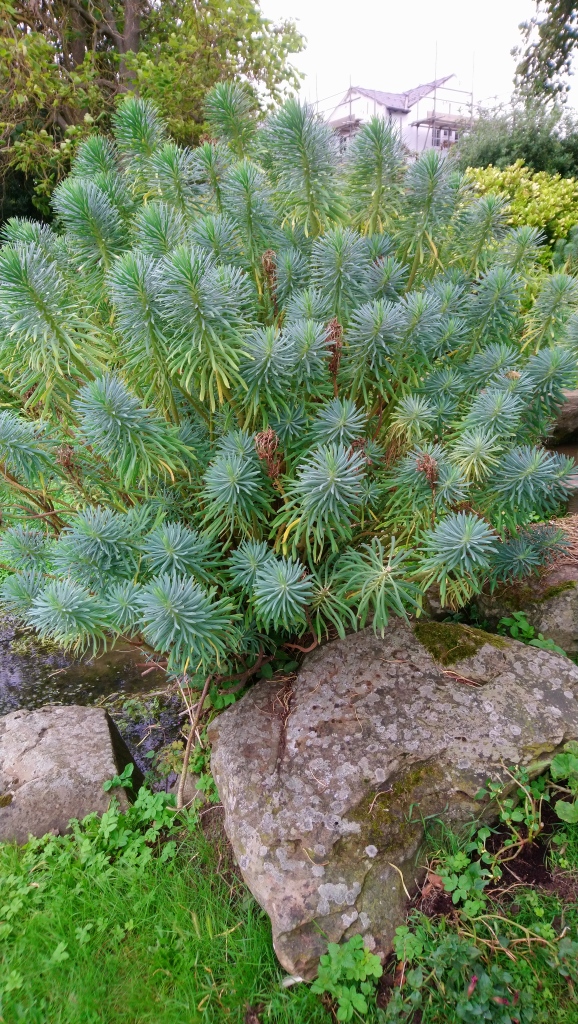
It has thick bunches of long, thin leaves, slightly bluish in colour, attached to tall, thick stems.
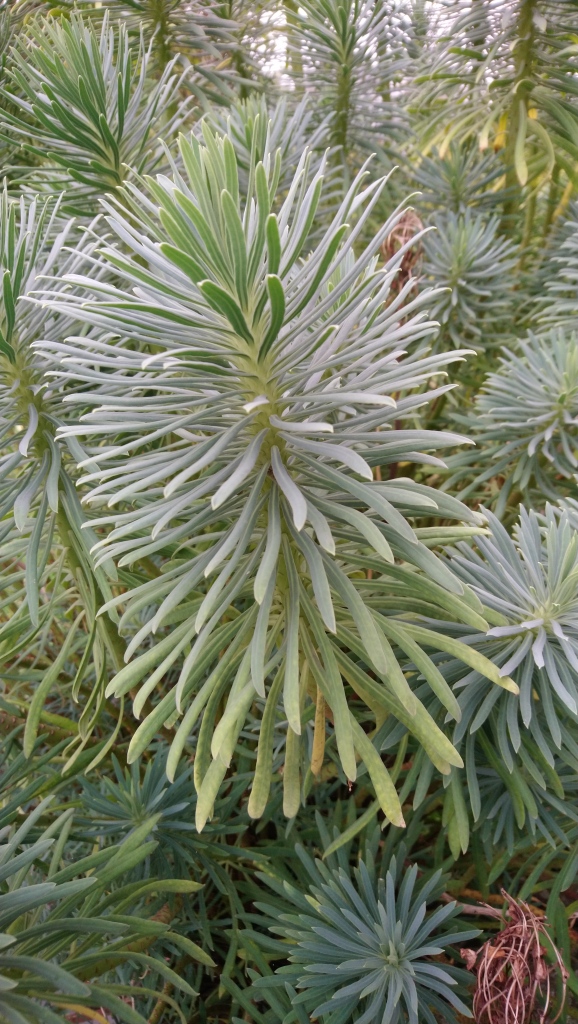



Its complex flowers structures look like large green flowers.

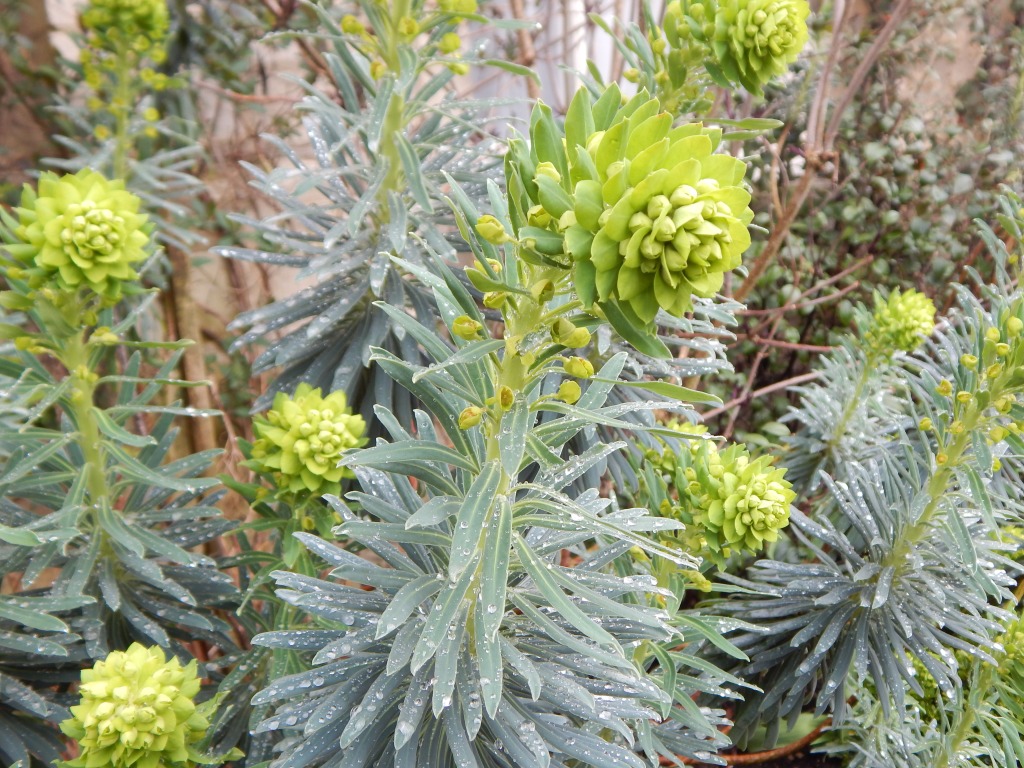
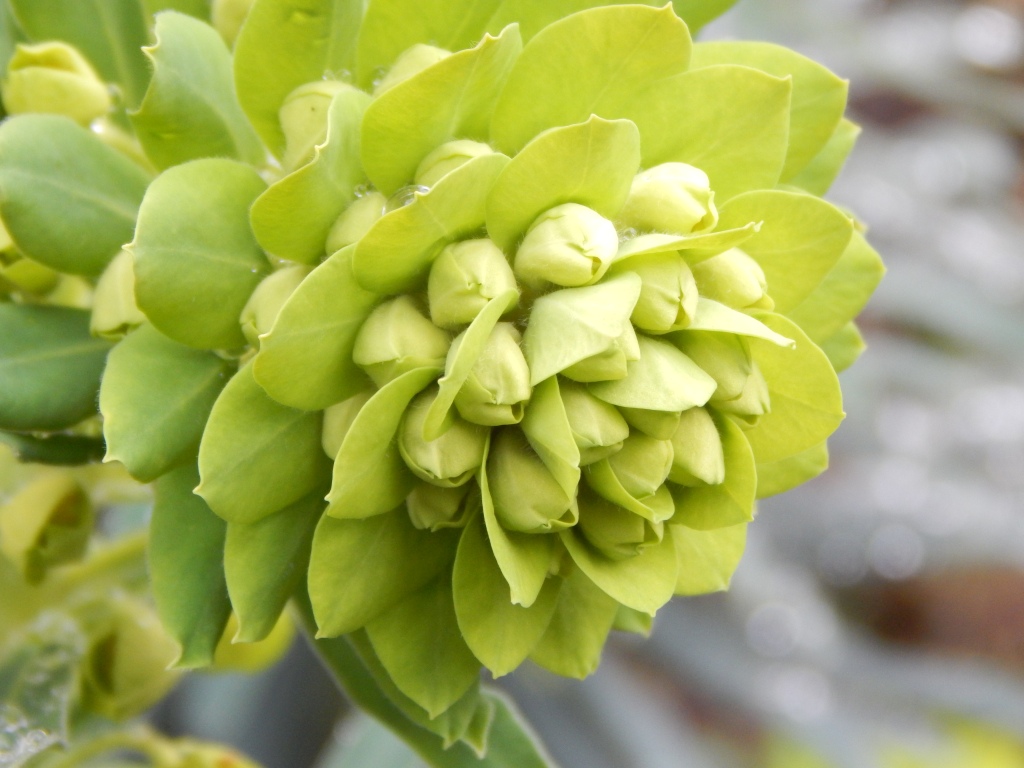
Habitat and use
There are two subspecies, E c characias and E c wulfenii, with different ranges covering most of temperate Europe, but not Britain. Both subspecies are cultivated and both have named cultivars.
Other Notes
This plant is more likely to be seen in public parks and gardens than in domestic gardens.
See also
The familiar Poinsettia, Euphorbia pulcherrima, is a close relative noted for vivid red bracts that look like flowers. Poinsettia is the most widely produced houseplant in the world. About seventy million are produced around Christmas just in the USA.
